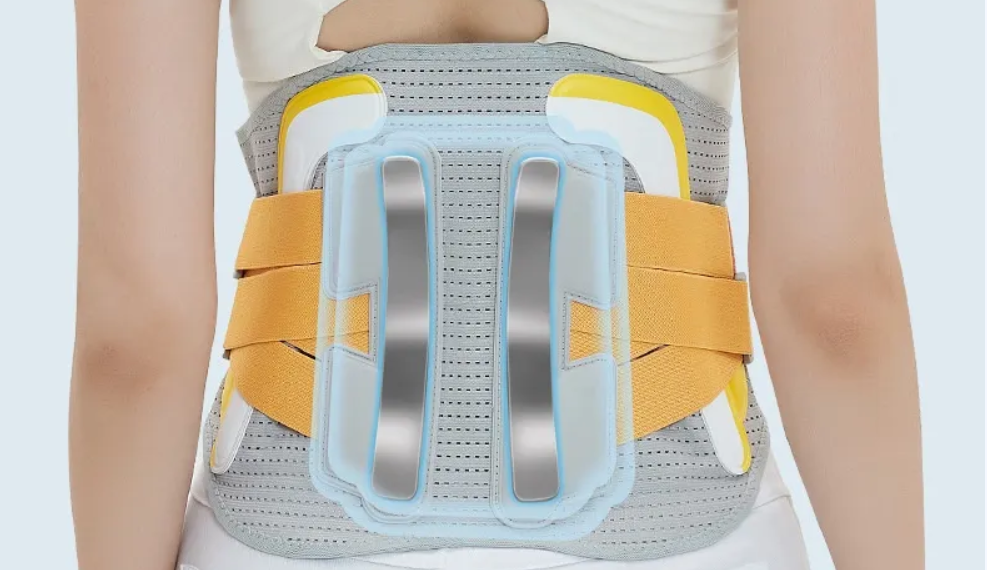john@lee-mat.com
+86-13510662576

GET QUOTE
Proper Techniques for Wearing a Back Brace
Back braces offer a range of benefits for individuals dealing with various back conditions. They provide support and stabilization to the spine and surrounding muscles, helping to maintain proper alignment and reduce strain. Additionally, back braces can relieve pain, correct posture, aid in recovery from surgery or injury, and prevent further injuries. Understanding the benefits of back braces is essential for maximizing their effectiveness and improving overall back health.
Understanding Back Braces
Types of Back Braces
Back braces come in different types, each designed to address specific needs and conditions. Corset-style braces, rigid braces, and elastic braces are among the most common options available. Corset-style braces offer flexible support, while rigid braces provide sturdy stabilization. Elastic braces offer a combination of support and flexibility, making them suitable for various back issues. Understanding the differences between these types of braces can help individuals choose the most suitable option for their condition.
Conditions That May Require a Back Brace
Various conditions may benefit from the use of a back brace. Lower back pain, post-surgery recovery, traumatic spine instability, poor posture, and degenerative conditions are among the common reasons for using a back brace. Whether dealing with acute pain, recovering from surgery, or managing chronic conditions, wearing a back brace can provide much-needed support and relief. Consulting with a healthcare professional can help determine the most appropriate use of a back brace based on individual needs and conditions.
Benefits of Wearing a Back Brace

Support and Stabilization
Back braces provide crucial support and stabilization to the spine and surrounding muscles. By maintaining proper alignment and reducing excessive movement, they alleviate strain on the back, allowing damaged tissues to heal and minimizing the risk of further injury.
Pain Relief
One of the primary benefits of wearing a back brace is pain relief. By distributing pressure evenly and supporting proper posture, back braces help reduce strain on the spine and its surrounding muscles, easing discomfort and promoting pain relief. This allows individuals to engage in daily activities without debilitating pain.
Posture Correction
Poor posture is a common contributor to back pain, but wearing a back brace can help correct posture by maintaining the natural curvature of the spine. By discouraging slouching or hunching, braces promote healthy posture habits, relieving strain on the back and reducing the risk of developing further pain or injury.
Aid in Recovery from Injury/Surgery
Back braces are often prescribed as part of the rehabilitation process following a back injury or surgery. They provide external support, restrict excessive movement, and aid in the healing process by reducing stress on the injured area. By stabilizing the spine and supporting weakened muscles, back braces can speed up recovery and prevent re-injury.
Prevention of Further Injuries
Proactively wearing a back brace can help prevent future injuries, especially during physically demanding activities or tasks involving heavy lifting. By offering additional support to the spine and limiting excessive movements, braces reduce the risk of strain or sprains, promoting long-term back health.
How to Wear a Back Brace Properly
Selecting the Right Back Brace
Choosing the appropriate back brace is essential for its effectiveness. Healthcare professionals can provide guidance on selecting the right type of brace based on individual needs and conditions. Factors such as the level of support required, the nature of the back issue, and activity level should be considered when choosing a brace.
Positioning the Brace Correctly
Proper placement of the back brace is crucial for optimal support and comfort. It should snugly fit around the lower back area, covering the lumbar region while aligning with the natural curve of the spine. Ensuring adequate coverage and comfort is essential to maximize the benefits of wearing a back brace.
Achieving the Right Fit
Achieving the right fit is essential for the effectiveness of the back brace. Proper measurement techniques should be used to select the correct brace size, and straps should be adjusted for a snug but comfortable fit. Overtightening should be avoided to prevent restriction of movement and discomfort, while still providing adequate support.
Best Practices for Wearing a Back Brace

Duration of Wear
When wearing a back brace, it's essential to tailor the wear time to specific conditions. Depending on the severity of the back issue, individuals may need to wear the brace for varying durations throughout the day. It's advisable to consult with a healthcare professional to determine the appropriate wear time and gradually adjust to brace usage as needed.
Activities and Situations Requiring Brace Usage
Back braces should be worn during activities that put strain on the back, such as engaging in physically demanding tasks or lifting heavy objects. By providing additional support, the brace helps reduce the risk of injury during these activities. Individuals should prioritize wearing the brace during situations where back strain is likely to occur.
Taking Breaks and Listening to Body Signals
Taking periodic breaks from wearing the back brace is crucial to allow the muscles to rest and prevent discomfort. It's essential to listen to the body's signals and monitor comfort levels while wearing the brace. If any discomfort or increased pain is experienced, individuals should remove the brace and adjust accordingly. Paying attention to these signals ensures that the brace is worn effectively and comfortably.
Care and Maintenance of Back Braces
Cleaning Instructions
Proper cleaning of back braces is essential to maintain hygiene and prolong their lifespan. Braces made of washable fabric can be cleaned with mild soap and water using proper washing techniques. Harsh chemicals should be avoided to prevent damage to the brace. Handwashing is generally safer than machine washing, and care should be taken to avoid using hard washing brushes that may cause tearing.
Storage Guidelines
Storing back braces properly is crucial to preserve their integrity and protect against damage and wear. Braces should be stored in a clean, dry place when not in use to prevent deterioration. Proper storage helps maintain the effectiveness of the brace and ensures that it remains in good condition for continued use. Taking care to follow these storage guidelines can extend the lifespan of the brace and optimize its performance.
Additional Tips for Maximizing Back Brace Benefits
Incorporating Regular Exercise and Strengthening
In addition to wearing a back brace, incorporating regular exercise and strengthening routines can further enhance its benefits. Strengthening the muscles supporting the back through targeted exercises can improve stability and posture, reducing the reliance on the brace over time. Consulting with a healthcare professional to develop a customized exercise program tailored to individual needs is recommended for optimal results.
Emphasizing Proper Posture and Body Mechanics
While wearing a back brace provides support, emphasizing proper posture and body mechanics is essential for long-term back health. Practicing good posture throughout the day, whether sitting, standing, or exercising, helps reduce strain on the back and complements the benefits of wearing the brace. Using proper body mechanics when lifting objects, such as using the legs and core muscles instead of relying solely on the back, further minimizes the risk of injury and promotes overall back health.
Conclusion
Properly wearing a back brace is essential for managing back pain, promoting healing, and preventing further injuries. Back braces offer support, stability, pain relief, and posture correction, making them valuable tools for individuals dealing with various back conditions.
Don't let back pain hold you back any longer. Look no further! Lee-Mat's Back Brace is here to provide you with the support and relief you need. Invest in Lee-Mat's Back Brace today and take the first step towards a pain-free and active lifestyle. Experience the difference firsthand and reclaim control over your back health. Order now and feel the relief!
